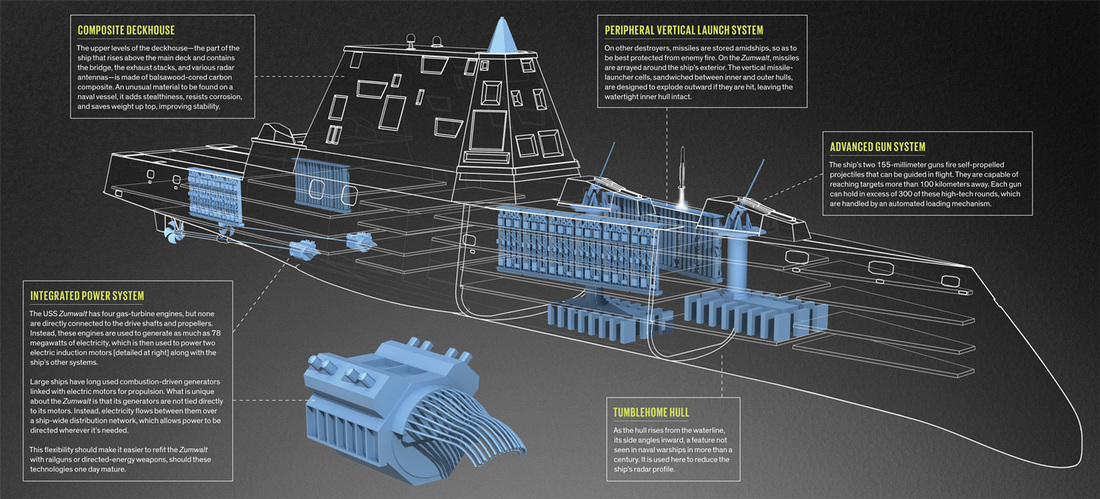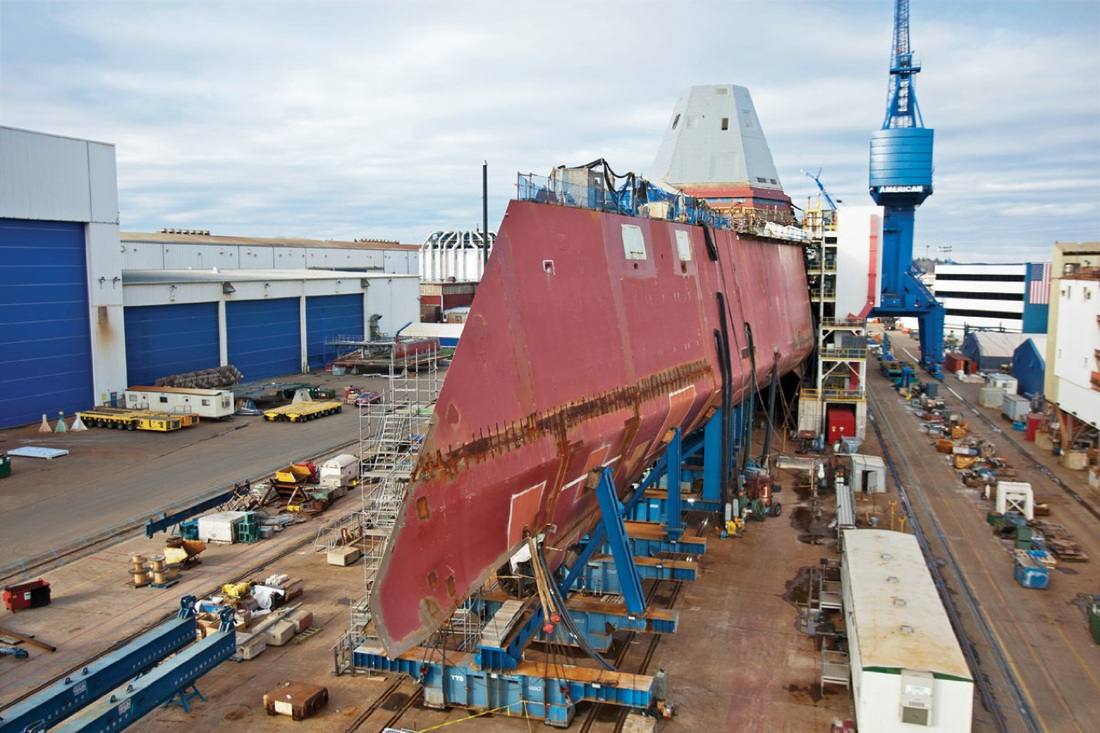It took another dozen years, but the first destroyer of that new generation is now nearing completion. Although less ambitious than the original concept, the first ship of this new class, the USS Zumwalt, is pioneering so many advanced technologies that some decision makers have criticized the program for trying to do too much, too soon.
Some of the pushback came simply from the enormous costs involved in developing so many cutting-edge technologies. Indeed, faced with mushrooming costs, the U.S. government reacted by repeatedly reducing the number of these destroyers to be built—eventually settling on just three ships. The total cost of the program, including R&D, that will result in those three ships is estimated to be US $22 billion, Another point of intense debate was whether the main task envisioned for this ship—cruising in coastal waters while supporting military operations on nearby lands—was really so important to U.S. geopolitical interests.
And there has been no shortage of purely technical questions. Chief among them: Are the many advanced technologies slated for the Zumwalt really battle ready? It will probably be years before we’ll know for sure. But it’s not too soon to consider how these technologies will affect future naval warfare.
The U.S. Navy has not released details about the ship’s interior. But after gathering what information we could, including construction photos, we assembled the accompanying illustration. Together these visual elements offer what may be a preview of how warships will look for decades to come.
One of the most obvious differences between the Zumwalt and almost all other ships is its basic shape. The Zumwalt has what’s known as a tumblehome hull, which narrows rather than widens with height above the waterline. The rake of the bow is also inverted, making the ship look like an oddly angular submarine.
Tumblehome hulls haven’t been seen on naval ships in over a century. The U.S. Navy used it here because the inward-angled hull won’t reflect radar energy straight back to an adversary’s antennas. Its main disadvantage is instability: A tumblehome hull provides no additional righting force when the ship heels over, causing some naval architects to speculate that it could make the Zumwalt prone to capsizing in rough seas.
Some of the pushback came simply from the enormous costs involved in developing so many cutting-edge technologies. Indeed, faced with mushrooming costs, the U.S. government reacted by repeatedly reducing the number of these destroyers to be built—eventually settling on just three ships. The total cost of the program, including R&D, that will result in those three ships is estimated to be US $22 billion, Another point of intense debate was whether the main task envisioned for this ship—cruising in coastal waters while supporting military operations on nearby lands—was really so important to U.S. geopolitical interests.
And there has been no shortage of purely technical questions. Chief among them: Are the many advanced technologies slated for the Zumwalt really battle ready? It will probably be years before we’ll know for sure. But it’s not too soon to consider how these technologies will affect future naval warfare.
The U.S. Navy has not released details about the ship’s interior. But after gathering what information we could, including construction photos, we assembled the accompanying illustration. Together these visual elements offer what may be a preview of how warships will look for decades to come.
One of the most obvious differences between the Zumwalt and almost all other ships is its basic shape. The Zumwalt has what’s known as a tumblehome hull, which narrows rather than widens with height above the waterline. The rake of the bow is also inverted, making the ship look like an oddly angular submarine.
Tumblehome hulls haven’t been seen on naval ships in over a century. The U.S. Navy used it here because the inward-angled hull won’t reflect radar energy straight back to an adversary’s antennas. Its main disadvantage is instability: A tumblehome hull provides no additional righting force when the ship heels over, causing some naval architects to speculate that it could make the Zumwalt prone to capsizing in rough seas.
Another distinguishing feature of the Zumwalt is its deckhouse, which rises above the main deck and houses the bridge, the exhaust stacks, and various radar antennas. Like the hull, it was designed to reduce the ship’s radar profile and has sides that cant inward. Unlike the steel hull, the upper part of the deckhouse is made of balsawood-cored carbon-composite panels.
This material, highly unusual for a warship, was used to reduce weight up top (which aids stability), enhance corrosion resistance, and make the ship more stealthy. But it’s very expensive, and in January of this year the Navy began investigating using only steel for the deckhouse of the third and final ship of the Zumwalt class, the USS Lyndon B. Johnson.
This material, highly unusual for a warship, was used to reduce weight up top (which aids stability), enhance corrosion resistance, and make the ship more stealthy. But it’s very expensive, and in January of this year the Navy began investigating using only steel for the deckhouse of the third and final ship of the Zumwalt class, the USS Lyndon B. Johnson.


